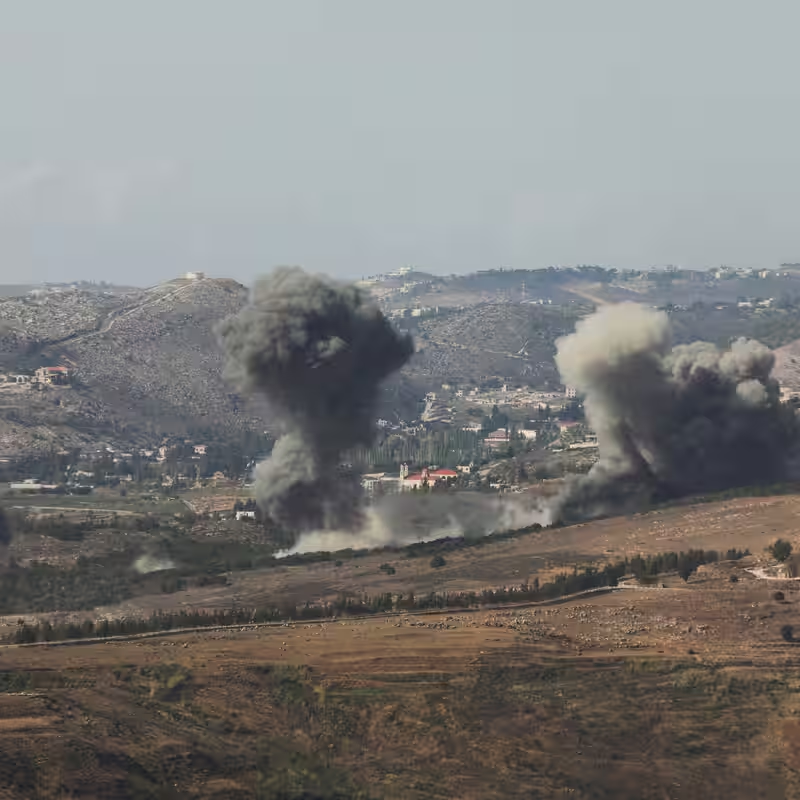Hezbollah is under renewed international pressure as U.S. Middle East envoy Morgan Ortagus wrapped up a high-stakes visit to Beirut on October 29, 2025, urging Lebanese leaders to disarm the Iran-backed militant group. The trip comes amid a sharp escalation in cross-border strikes between Israel and Hezbollah, raising fears of a full-blown regional war .
Why Now? The Timing of Ortagus’s Visit
Ortagus’s meetings with Lebanese President Joseph Aoun and Prime Minister Najib Mikati coincided with the deadliest week of Israeli airstrikes on southern Lebanon in over a year. According to the Lebanese Health Ministry, more than 40 people—including civilians—have been killed in the past seven days alone .
“The status quo is unsustainable,” Ortagus told reporters after her closed-door sessions. “Lebanon must assert its sovereignty by ensuring no armed group operates outside state control—especially one as heavily armed as Hezbollah.”
What the U.S. Is Asking For
The U.S. position isn’t new, but the urgency is. Washington is pushing for Lebanon to implement UN Security Council Resolution 1701, passed after the 2006 Israel-Hezbollah war, which calls for the disarmament of all militias and the extension of state authority throughout the country .
Ortagus emphasized that U.S. economic aid—critical for Lebanon’s collapsing economy—remains tied to tangible progress on security sector reform. “Support comes with responsibility,” she said.
Hezbollah’s Grip on Lebanon
Despite being a designated terrorist organization by the U.S., EU, and others, Hezbollah holds significant political power in Lebanon. It commands an estimated 150,000 fighters and possesses a missile arsenal larger than many national armies—reportedly including precision-guided systems capable of reaching deep into Israel .
Lebanese officials, however, argue that disarming Hezbollah unilaterally could trigger internal chaos. “We cannot provoke a civil conflict while our people are starving,” said one senior minister, speaking anonymously.
Israel’s Calculated Escalation
Israeli Defense Forces (IDF) claim recent strikes targeted Hezbollah rocket depots and command centers embedded in civilian areas. Military analysts suggest Israel is testing Hezbollah’s response threshold while the group remains distracted by its support for Iran’s regional allies .
But each strike risks miscalculation. On October 28, Hezbollah fired over 120 rockets into northern Israel—the largest barrage since 2006—prompting evacuations and blackouts.
Timeline: Escalation in the Past 30 Days
| Date | Event |
|---|---|
| Oct 1 | Israeli drone strike kills Hezbollah commander in Beirut |
| Oct 12 | Hezbollah launches 50 rockets; Israel responds with artillery |
| Oct 22 | U.S. warns of “imminent risk of war” in UN Security Council |
| Oct 29 | Morgan Ortagus arrives in Beirut; 15 killed in Israeli airstrike |
Regional Reactions
Iran dismissed Ortagus’s demands as “American interference,” while France—Lebanon’s former colonial power—backed U.S. calls for de-escalation but urged “inclusive dialogue.” Meanwhile, Saudi Arabia signaled quiet support for weakening Hezbollah’s influence, viewing it as an Iranian proxy.
What’s at Stake?
A wider war would devastate Lebanon’s already shattered economy and displace hundreds of thousands more. For Israel, it risks a two-front conflict with Hamas in Gaza and Hezbollah in the north. And for the U.S., failure to contain the crisis could undermine its broader Middle East strategy amid growing Chinese and Russian diplomatic inroads.
Ortagus left Beirut without a public breakthrough—but U.S. officials say behind-the-scenes talks will continue. “The window for diplomacy is narrow,” she warned, “but it’s still open.”




